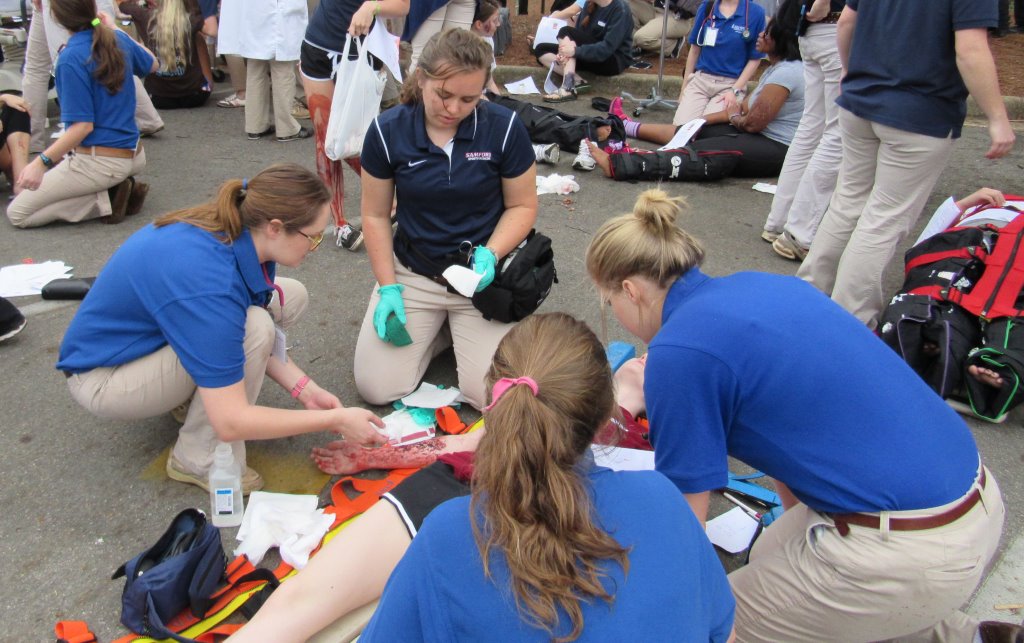https://www.youtube.com/watch?v=o5AYOUvXUOM

Samford University’s Ida V. Moffett School of Nursing simulated a community incident on April 2 to help prepare future nurses and other health care providers to respond in the event of a campus or community emergency. In partnership with Homewood Fire Department, Regional Paramedic Service and Samford’s Office of Public Safety, the nursing school created a severe weather situation involving injuries ranging from psychological impact to fatalities. In addition to nursing students, students from the departments of nurse anesthesia, communication sciences and disorders and kinesiology also participated.
“Health care professionals from a variety of disciplines are often called upon to respond in a time of crisis, and it is our hope that this drill will help our students be more adequately prepared to respond quickly and effectively in emergency situations,” said Jill Pence, assistant professor and coordinator of undergraduate simulation in the Ida V. Moffett School of Nursing.
Nursing, communication sciences and disorders and kinesiology students played the role of victims. First responders included senior undergraduate nursing students and students from athletic training, nurse anesthesia and pre-professional programs.In addition to providing the opportunity to participate in the triage process, the simulation offered students a realistic look at interprofessional communication and practice. Students and professionals from a variety of disciplines worked together to meet the needs of victims. Community agencies interacted with students as they would in an actual emergency further increasing the interprofessional experience.
This is the fourth annual disaster simulation, but the first time that students from other majors on campus have participated. Regardless of major, each of the 170 students fulfilled essential objectives through the experience.
“The disaster simulation is a great opportunity for students in the athletic training program to utilize emergency management skills in a controlled setting,” said Robb Hensarling, associate professor of kinesiology and director of athletic training education. “Additionally, the simulation allows students to communicate and collaborate with other healthcare disciplines they will work with as they transition to practice and that experience is invaluable.”
While meeting the objectives of the nursing school and university, the drill allowed partnering agencies to assess their emergency response plans. First-responders utilized normal protocol for responding to such a disaster. In addition to participating in the simulation, representatives from the various agencies and other third parties were on hand to evaluate their respective participants’ response and faculty evaluated the students’ response to the situation. Leaders from the university and various departments will conduct follow-up meetings with agency partners to discuss the response and next steps.
Associate Professor Cindy Berry and Pence were the lead developers of the simulation. “It is essential that our students and the university be prepared for situations such as the one simulated today,” said Berry. “We are grateful to the various departments and community agencies for helping us better equip our students and the university to respond to critical community incidents.”
